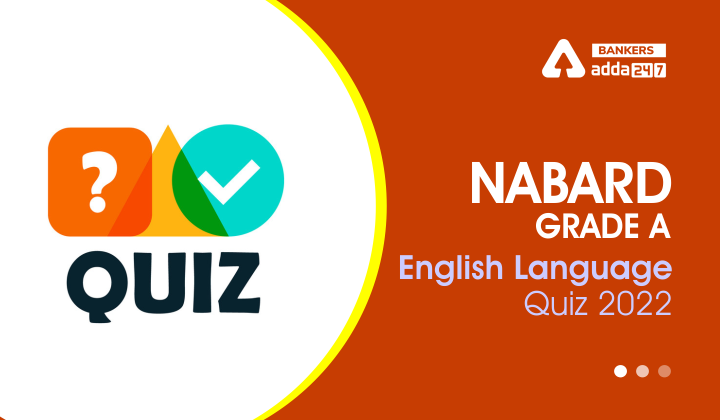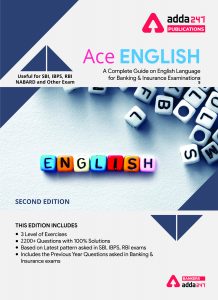Directions (1-5): In the following passage, some of the words have been left out, each of which is indicated by a number. Find the suitable word from the options given against each number and fill up the blanks with appropriate words to make the paragraph meaningful
As early Europeans first stepped ashore in what they considered the “New World,” they were usually welcomed by the peoples indigenous to the Americas. Native Americans seemed to regard their lighter-complexioned (1) as something of a marvel, not only for their dress , beards, and winged ships, but even more for their technology – steel knives, swords, and cannons; mirrors and earrings; copper and brass kettles; and other unusual items .
Nonetheless, Native Americans soon recognized that the Europeans were flawed and thoroughly human. (2), early records show that 16th- and 17th-century Native Americans very often (3) Europeans as rather detestable specimens. For instance, Europeans were frequently accused of being stingy with their wealth and (4) to the extreme, as witnessed in their insatiable desire for beaver furs and deer hides. Similarly, the indigenous population was also surprised at the Europeans’ intolerance for native religious beliefs, marital arrangements, eating habits, and other (5) .
Q1.
(a). Faces (b). Hosts (c). Hair (d). Visitors (e)Brothers
Q2.
(a). Factually (b). Eventually (c). Indeed (d). Realistically (e)Truly
Q3.
(a). Admired (b). Looked (c). Thought (d). Regarded (e)Imagine
Q4.
(a). greedy (b). Righteous (c). Indolent (d). Sophisticated (e)Foolish
Q5.
(a). Vices (b). Ceremonies (c). Festivities (d). Customs (e)Things
Directions (6-10) : In the following passage there are blanks, each of which has been numbered. These numbers are printed below the passage and against each five words are suggested, one of which fits the blank appropriately.
Find out the appropriate word in each case.
Organisational ……….(6)………. is a very broad subject that appears frequently in recent management studies. Organisations have many opportunities to improve whatever it is that they do. They can reflect on their operations, study their products, ………..(7)……… to customers, and encourage ……….(8)………. parts of the organization to share knowledge as well as the results of their individualistic efforts. All firms have these opportunities, although few companies take full advantage of them. Good firms everywhere …………(9)………… their processes and products in order to learn from past successes as well as failures. They measure and benchmark what they do. They try to get different parts of the organization to …………(10)……….. with one another.
Q6.
(a) building (b) structure
(c) conflict (d) learning
(e) system
Q7.
(a) please (b) pay
(c) listen (d) call
(e) refer
Q8.
(a) all (b) some
(c) many (d) significant
(e) different
Q9.
(a) design (b) criticize
(c) innovate (d) critique
(e) protect
Q10.
(a) cooperate (b) grow
(c) mingle (d) expand
(e) develop
Directions (11-15): In the following passage, some of the words have been left out, each of which is indicated by a number. Find the suitable word from the options given against each number and fill up the blanks with appropriate words to make the paragraph meaningful.
Until about 250 years ago, households did not take dirt as (11)……. as they do now – it was a fact of life, and that was that. Cleaning often consisted of an annual (12)……. called ‘spring cleaning’ when the furniture was moved aside, and all the linen products in the house were cleaned. Carpets and rugs were taken outside, hung on ropes and had the dust (13)……. out of them – an exhausting and messy process.
The industrial revolution brought about a major change – as new products became available to make homes cleaner, a corresponding interest in ‘domestic hygiene’ appeared in households. This in turn led to the development of further products, one of which was the vacuum cleaner.
(14)……. has it that when one of the first vacuum cleaners was demonstrated, a kindly scientist took the proud inventor (15)……. , and offered a bit of advice that was to become crucial to the future evolution of the product – ‘make it suck, not blow’.
Q11.
(a)importantly
(b)crucially
(c)considerately
(d)seriously
(e) None of these
Q12.
(a)ritual
(b)result
(c)resolution
(d)scrub
(e) None of these
Q13.
(a)cleaned
(b)taken
(c)beaten
(d)sucked
(e) None of these
Q14.
(a)Story
(b)Epic
(c)Legend
(d)Tale
(e) None of these
Q15.
(a)away
(b)aside
(c)aback
(d)along
(e) None of these
Solutions
S1. Ans. (d)
S2. Ans.(c)
S3. Ans. (d)
S4. Ans.(a)
S5. Ans.(d)
S6. Ans. (a)
S7. Ans. (c)
S8. Ans. (e)
S9. Ans. (c)
S10. Ans. (a)
S11. Ans.(d)
S12. Ans.(a)
S13. Ans.(c)
S14. Ans.(c)
S15. Ans.(b)





 GA Capsule for SBI Clerk Mains 2025, Dow...
GA Capsule for SBI Clerk Mains 2025, Dow...
 The Hindu Review October 2022: Download ...
The Hindu Review October 2022: Download ...
 IBPS Clerk Mains Cut Off 2025, Check Sta...
IBPS Clerk Mains Cut Off 2025, Check Sta...







